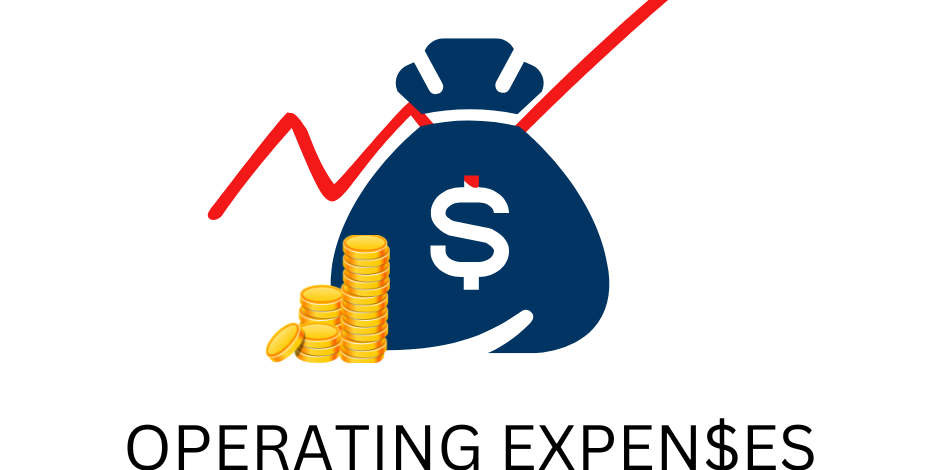Operating expenses are a crucial aspect of commercial leases, but they can often be confusing and hard to understand. In this comprehensive guide, we’ll break down the different types of operating expenses, how they’re calculated, and how they impact tenants. So, buckle up and let’s dive into the world of operating expenses!
Operating expenses are the costs associated with running and maintaining a commercial property. These can include property taxes, insurance, maintenance, repairs, utilities, snow removal, janitorial, and other services required to operate and manage the building.
There are three main types of commercial leases: full-service leases, modified gross leases, and triple net leases. Each type of lease has a different approach to how operating expenses are handled.
- Full-Service Leases: In a Full-Service lease, the tenant pays a fixed amount of rent, and the landlord is responsible for all operating expenses. This type of lease is often the simplest for tenants, as they don’t necessarily have to worry about variable expenses. However, as we know, costs tend to increase over time. Given this, Full-Service leases have an annual mechanism of reconciliation to allow the Landlord to pass through increases. Logistically, Landlords send annual reconciliation reports in Q1 of each year, effectively reconciling or comparing the prior year’s budget expenses versus the actual expenses. The actual expenses are then compared to a Tenants Base Year or Expense Stop and then any negotiated caps are applied, and the Tenant pays the difference. Tenants need to ensure they have strategically negotiated their Base Years or expense stops, caps, capital expenses and done a full review of controllable and non-controllable expense language in the lease. This creates some guard rails to provide the Tenant the most security possible in their expenses over time. This lease structure is most common in Office Leases.
- Modified Gross Leases: In a modified gross lease, the tenant pays a fixed amount of rent, but has the responsibility for directly paying some specific operating expenses. Though those expenses are negotiable, a Tenant may typically be responsible for paying Janitorial, Utilities, HVAC repair and maintenance, and some additional repair and maintenance responsibilities. This lease structure is most common in smaller office and flex leases.
- Triple Net Leases: In a triple net (NNN) lease, the tenant pays a fixed amount of rent, often called Base Rent, plus their pro-rata share of all TICAM. TICAM stands for Taxes, Insurance, and Common Area Maintenance. In this lease structure, the Tenant is also responsible for contracting for their own Janitorial and Utilities, as well as some repair and maintenance responsibility. Similar to a Full-Service Lease, the Landlord will send budget estimates and reconcile the operating expenses. Landlords will send our annual reconciliation reports requiring Tenants to pay the difference and, in some cases, may update budgets throughout the year. Though Operating Expense Stops and caps on controllable expenses are possible, it is much less common in NNN leases than in full-Service leases. This lease structure is common in Industrial and Retail leases, and in some markets for office leases.
Operating expenses can be divided into two categories: controllable and non-controllable expenses. Examples of Controllable and Non-Controllable Expenses:
Controllable Expenses:
- Maintenance & Repairs: Keeping the property in good condition, such as painting, fixing pipes.
- Services: Janitorial, Landscaping, and Security
- Management Fees: Paying a company to handle the daily operations of the building.
Non-Controllable Expenses:
- Property Taxes: Taxes the landlord pays to the local government for the property.
- Insurance: Protecting the property from damage, theft, or other risks.
- Utilities: Costs for heating, cooling, electricity, water, and other services needed to run the building.
- Snow removal
Operating expenses are typically calculated on a pro rata basis, meaning that each tenant pays a proportionate share of the total operating expenses based on the size of their leased space as compared to the total size of the building. Many leases will indicate the pro-rata share in the summary section. However, to calculate pro rata, you need to determine your suites Rentable Square Footage, and divide by the total buildings Rentable Square Footage. This will give you the tenant’s pro rata share, which is usually expressed as a percentage. For example, let’s say you have a building with 100,000 rentable square feet and a tenant occupying 5,000 rentable square feet. The tenant’s pro rata share would be 5% (5,000 / 100,000). This means the tenant is responsible for 5% of the building’s operating expenses.
Negotiating caps on operating expenses can be a crucial aspect of commercial leases for tenants, as it directly impacts their financial responsibilities. Tenants may seek to negotiate a cap on operating expenses to limit the potential increase in their financial obligations from one year to the next. This cap is typically a percentage increase, such as 3% to 7% annually. For example, if a tenant and landlord agree on a 5% annual cap, the tenant’s operating expenses the following year will not exceed 105% of the cost from the prior year. There are many negotiated variables to operating expense caps. For example, often caps are only on controllable operating expenses. Further, Landlords attempt to negotiate cumulative and compounding caps, which give the Landlord more flexibility to pass through expenses over time.
Operating Expenses can be a point of contention during lease negotiations during the LOI and the Lease stage. It takes a very keen eye to review the Operating Expense language of a commercial lease. The implications of getting it wrong can be expensive in the long run. Finally, it is important to track, review, and save your reconciliation reports each year. Have your Tenant Representative review the reconciliation report annually (RCR does this service for free), so you can ensure there are no errors or issues and that the Landlord adhered to the cap properly.









